The 10 best (mostly Euro) ski resorts for guaranteed snow

Ski resorts across the globe have begun to open as the first major snowfalls of the winter transform conditions on the slopes. As we enter ski holiday season, all eyes are firmly on the snow forecast.
In recent years, skiers have become increasingly familiar with the unpredictability of weather patterns in the mountains — but thankfully there are still places that can guarantee a white welcome, whatever the weather. Whether you’re keen to get your first turns in on fresh snow early in the season or want to avoid the slushy remains of the winter on an end-of-season blast, booking a high-altitude ski resort is your safest option. It will ensure that good conditions are pretty much a certainty, no matter how the forecast has fared.
Resort height isn’t the only thing to look for though — high-altitude lifts, glacier skiing, north-facing slopes, extensive snow-making facilities and historically reliable cover are all key to perfect pistes and a decent depth of powder.
The beauty of snow-sure resorts is that you’re unlikely to be disappointed no matter what month of the season you choose to travel — here are 10 of the best.
ROAM. Landing in your inbox weekly.
A digital-first travel magazine. Premium itineraries and adventures, practical information and exclusive offers for the discerning traveller.
By continuing you agree to our Terms and Privacy Policy.Cervinia, Italy
Best for confidence buildingSlopes up to 3820m
Thanks to its high altitude, even in the driest Italian winter top-to-bottom snow conditions are virtually guaranteed in Cervinia from December (the resort opened for winter in October) to the end of April, and the glacier is also open for winter sports from June to September. It boasts fabulous long runs, and there’s good grooming and snow-making too.
This isn’t the prettiest resort village in the Alps, but its slopes offer a wonderful playground, dictated by the easy gradient of seemingly never-ending runs.
The majority of the reds are gentle enough to be classified as blue elsewhere, allowing beginners and wobbly intermediates to gain enormous confidence in an extensive high-mountain area.
The 8km Ventina red run, with breathtaking views of 4000m peaks, descends a mighty 1833m from the top of Plateau Rosa (3480m) all the way down to the resort.
Cervinia itself has 160km of pistes covered on the local lift pass, and is also linked by a new high-speed lift — the Matterhorn Alpine Crossing — to the slopes of Zermatt in Switzerland.
The more expensive international pass covering both resorts brings the total up to a mighty 360km.

Il Duce, Benito Mussolini, decreed in the 1930s that the then embryonic resort should change its name from the Swiss-German-sounding Breuil to Cervinia, to reflect the Italianate glory of the mountain above it.
However, most of us think of this mountain as the Matterhorn rather than Il Cervino — and there’s a less spectacular view of its iconic shape from the Italian side of the peak. Where to stay: A lovely rustic ski-in/ski-out hotel on the slopes just above the resort, the Hotel Meublé Mon Rêve has a shuttle service to and from town. Built in 2009 from local materials including lots of wood, it has just 25 rustic and spacious rooms, a breakfast room and a cosy bar.
Engelberg, Switzerland
Best for weekend breaksSlopes up to 3030m
Situated at 1050m above beautiful Lake Lucerne, Engelberg has a well-deserved reputation for snow.
While the village is quite low altitude, most of the slopes are high, going up to 3028m on Mount Titlis, and shady too, so they hold their snow well. It’s just 75 minutes by car from Zürich airport, 100km away, or by train in two hours, so is within reach for a weekend.
The main action is on Titlis, with superb pistes and long powder runs.
Expansive freeride zones include the more than 1000m vertical Laub and the crevasse-strewn Steinberg (do hire a mountain guide or instructor).
An eight-seater walk‑in gondola, the Titlis Xpress, whisks up to 2400 people an hour to the mid-mountain hub of Stand via a mid-station at Trübsee, an ascent that takes just 16 minutes.
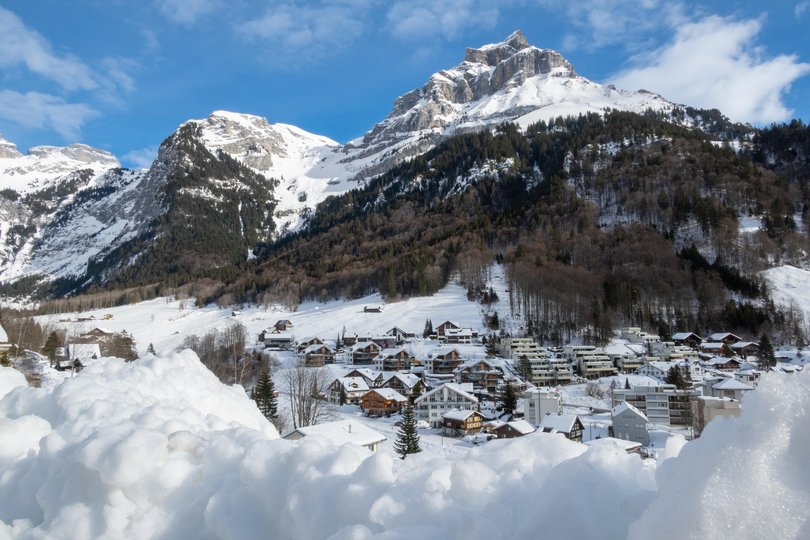
The sunny pastures of Brunni, on the opposite side of the town, form an ideal beginner and intermediate ski area dotted with huts providing welcome refreshments.
The small town has been dominated for the past 900 years by a mighty Benedictine monastery, which looms vast and ancient amid Swedish-run bars and ski shops.
At weekends there’s full-on nightlife and an influx of young freeriders from Zürich and Lucerne. Engelberg also hosts many non-skiing Asian visitors, summer and winter.
The resort’s long-standing rotating cable car to Titlis, with its stupendous views, is a draw — as is Engelberg’s use as a location for Bollywood films.
Where to stay:
Dating back to 1898, the charming four-star Hotel Bellevue Terminus sits opposite the train station. The hotel has a supper club restaurant, Yucatan, which serves innovative dishes such as Mexican spare ribs and crispy chicken burgers.
Alta/Snowbird, USA
Best for buckets of powderSlopes up to 3215m
These linked resorts in Utah are among the powder capitals of the world – the snow here is as plentiful, frequent and light as it comes.
On average, they receive more than 14m of snow a year, twice as much as some resorts in the neighbouring state of Colorado and about 30 per cent more than nearby Park City ski resort.
Although most of the slopes are left unpisted, there are some groomed runs for intermediates and plenty of steep slopes where confident intermediates can try powder.
The slopes of Snowbird and Alta add up to a big area by US standards (1902ha), however snowboarding is banned on Alta’s slopes —but Snowbird alone still has more than 1010ha.
A high-speed chairlift (a quad) to the high point of Point Supreme makes this area enjoyable and quick to get around.
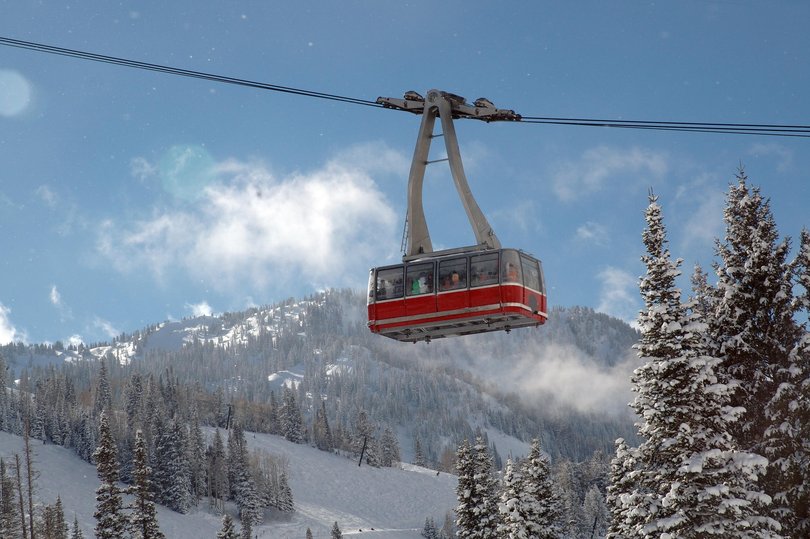
For scenic eating on the mountain, the Summit at the top of Snowbird’s slopes has floor-to-ceiling windows affording spectacular views of the Wasatch mountains and Salt Lake valley, and has a large outdoor terrace too.
The resort villages are both tiny, quiet collections of hotels and apartments. Alta, which was a bustling mining town in the late 19th and early 20th centuries, has a friendly, old-fashioned feel, while Snowbird’s modern, concrete, purpose-built base lacks resort charm.
There are few bars or restaurants, except those linked to hotels, and little to do off the slopes, unless driving the 40km to Salt Lake City appeals.
Where to stay:
To make the most of the powder, opt for Cliff Lodge, Snowbird’s biggest and plushest hotel, located right on the slopes. It also has a rooftop pool and spa.
Niseko, Japan
Best for, well, all things JapaneseSlopes up to 1200m
Japan’s north island of Hokkaido is home to some of the snowiest resorts in the world.
Niseko is the biggest, with three resort bases — Annapuri, Niseko Village and Hirafu — and an average of 15m of usually dry, light powder falling every year.
Storm after storm comes in from Siberia over the Sea of Japan and dumps snow on an almost daily basis; it’s not unusual for snow to fall constantly from early December to the end of February.
Niseko has 55km of pistes, but that’s not the main reason for coming here — there are many powder playgrounds of perfectly spaced trees, and backcountry gates that give access to more challenging runs.
What’s more, there is an extensive floodlit network after dark, making it possible to enjoy surreal fresh tracks through the trees under artificial light. There is also the chance to try snowcat skiing and snowboarding, with local outfits operating out of disused ski resorts.
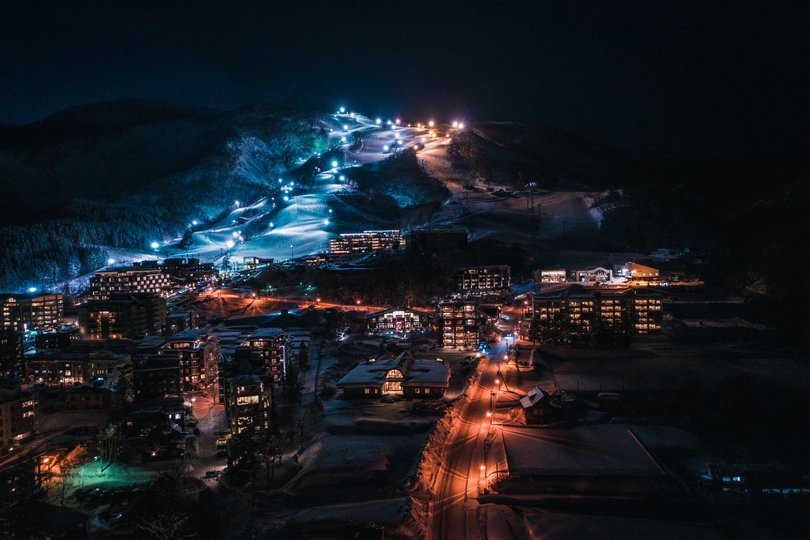
A visit to Japan combines the slopes with unusual cultural experiences — sushi and noodle bowls on the slopes, vending machines selling hot coffee, and steaming hot springs (onsen) to wallow in, for starters.
There are plenty of funky bars and both Japanese and Western style restaurants in Niseko’s resort bases too, of which Hirafu is the liveliest.
Where to stay
The four-star plus Ki Niseko hotel mixes Japanese elegance with Alpine charm in a ski-in/ski-out location near the gondola in Hirafu. It has knock-out views including the extinct Mount Yotai volcano, and a spa with onsens.
Obertauern, Austria
Best for familiesSlopes up to 2315m
Obertauern is an ideal family destination for those looking for easy intermediate runs and, more often than not, slopes direct from the doorstep, all wrapped up in a relaxed atmosphere, far from the razzmatazz of a major resort.
It is both Austria’s only attempt at a purpose-built destination and also one of its oldest, established in the early 1900s. At either end of the season when other Austrian resorts may struggle to open — or to remain open — Obertauern is half-buried in the white stuff.
What’s more, the shape and pitch of most of the terrain makes it relatively avalanche secure.
Austria doesn’t do purpose-built ski resorts like France, but it’s possible to step out each morning on to the piste from most hotels in Obertauern, and slide all the way back home in the afternoon.
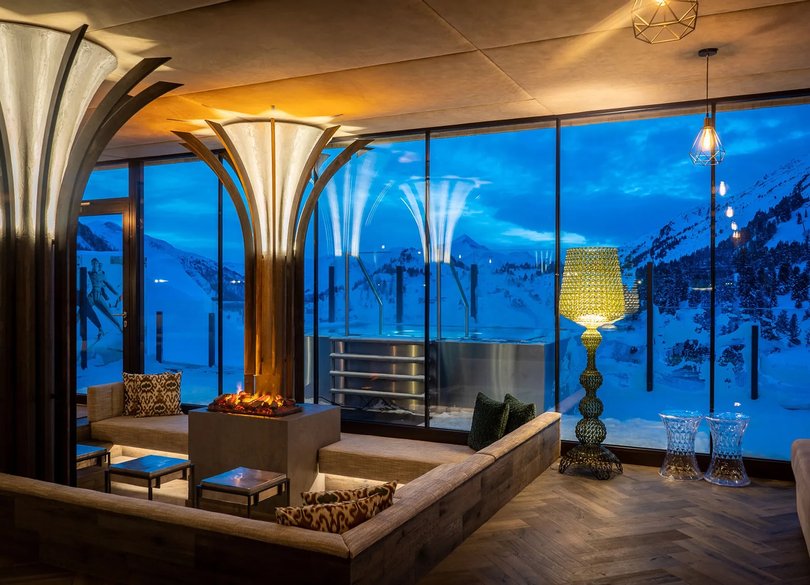
The downside is that it’s never managed to cross the line between being a ski destination and a ski resort. There’s no real village centre as such, merely a growing number of hotels with adjacent shops.
The Beatles and a crew of 60 spent a fortnight making the film Help! here in March 1965, putting the little-known resort on the map — and the locals today still can’t believe that the dice fell so decisively in their favour.
Two lads-about-town who worked as part-time ski instructors were even picked to be the ski doubles for Paul McCartney and George Harrison.
Today the families of Herbert Lürzer and Gerhard Krings own a golden portfolio of hotels, restaurants, shops, and even some of the ski lifts and pistes, with 400 employees between them.
Where to stay:
The elegant four-star superior Hotel Das Kohlmayr has a playroom for children and lovely views. The restaurant is known for its varied food and caters for gluten-free and vegan diets.
Tignes, France
Best for expert challengesSlopes up to 3820m
With the main resort villages at 2100m and a high point of 3456m, Tignes is one of the most dependable winter destinations in France.
What’s more, the piste grooming is some of the best in Europe.
From early December it can be possible to descend from the top of the Grande Motte glacier — the high point in the ski area Tignes shares with Val d’Isère — to the funicular station at Val Claret, a drop of 1350m. That’s more than most resorts in the world can offer in February.
It’s not essential to be an expert to visit Tignes, but to get the most out of it takes strong legs and the confidence to tackle dark blue runs and testing reds that sometimes, wonderfully, seem to go on forever.
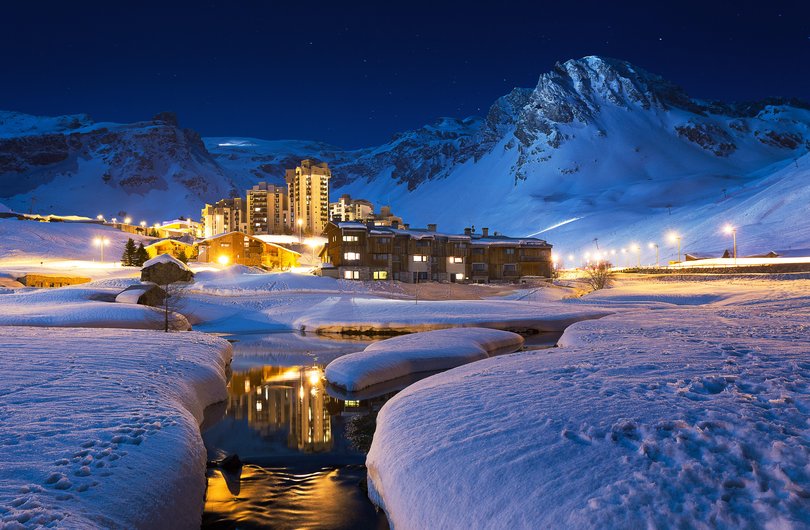
One of the main runs back down into Tignes, the black Trolles, is steep and challenging, and the resort is also home to some truly outstanding powder terrain, including a selection of horribly steep couloirs around La Grande Balme and La Petite Balme, two rocky outcrops at the southern end of the valley.
There is also an array of freestyle terrain park and boardercross fun and games to be had across the area.
Tignes 1800 and Les Brévières are Tignes’ most charming bases. However, higher Val Claret and Tignes Le Lac – 2km apart but jointly known as Tignes 2100 to reflect their altitude – offer the purpose-built convenience that is the hallmark of high-altitude French resorts. Most of the après action is here, as well as the pick of the hotels, restaurants and shops. Where to stay: A smart apartment complex at Tignes Les Boisses (Tignes 1800), Kalinda Village is located in the middle of the village between the church and the beginner slopes and gondola. It has its own restaurant and bar as well as a spa with pool, sauna, steam room and hot tub.
Livigno, Italy
Best for terrain parksSlopes up to 2795m
Livigno is one of the most inaccessible resorts in Europe. It takes the best part of three hours to get there from Innsbruck, and even longer from Italian hub airports.
It’s worth the long journey, though, not only for the quality of its five terrain parks, but for its low prices and reliable snow cover.
The slopes are great for beginners and low intermediates, with terrain on both the Mottolino and Costaccia/Carosello sides of the valley. There’s nothing too demanding but good intermediates will enjoy the groomed blacks on Mottolino, as well as the wide choice of reds.
The remote village is strung out along 10km of mountain road that comes to a full stop in winter at 1816m, close to the Swiss border.

Many of the old wooden houses in the traffic-free village centre have been converted into atmospheric bars, clubs and restaurants, and Livigno has a tax status dating back to Napoleonic times — there’s no VAT, which makes drinks and consumer goods some of the cheapest in Europe.
Livigno is one of Europe’s best resorts for terrain parks — hence it being chosen to host the freestyle and snowboarding events of the 2026 Milan-Cortina Winter Olympics.
The main park is on the back side of the Mottolino slopes and has three lines for different standards and a jib-line. At the top of Carosello 3000 there’s the Beach, where people chill out sunbathing among palm trees and coconuts, listening to music and watching the antics in an easy terrain park and jumps into an airbag. A snowcross course starts here too.
As well as all that, freestyle attractions include another park near the Amerikan lift in town, a 1.2km freeride-cross course combining natural terrain features with man-made jumps on Mottolino and Snowpark20, with over 20 features including jumps, boxes and rails.
Where to stay:
The modern Hotel St Michael has a great restaurant serving both Alpine and Mediterranean food, and is 250m from the lifts, and 350m from the centre.
Andermatt, Switzerland
Best for bragging rightsSlopes up to 2965m
Andermatt sits in a good position for gathering snow, at a meeting of valleys close to the northern side of the Alps. The altitude is helpful, too – on the main mountain, steep and shady Gemsstock, most of the slopes are between 2000m and 3000m.
There’s often good snow here when conditions in the Valais region, Switzerland’s main concentration of major resorts, have been mediocre.
Six years ago, Andermatt underwent a £1.2 billion redevelopment backed by billionaire Samih Sawiris.
The resort’s smaller sector, Nätschen-Gütsch, was linked with that of Sedrun, 15km away to the east, via a series of lifts and red and blue pistes on virgin slopes, fully linking the two ski areas by piste and lift in both directions.
The link took the total pistes on offer in Andermatt from 86km to 120km. Then, in 2022, Colorado firm Vail Resorts, which operates nearly 40 ski resorts in North America, including Whistler Blackcomb, Breckenridge and Park City, paid CHF 149 million for a 55 per cent stake in the Swiss resort. Since, investment in the resort has skyrocketed.
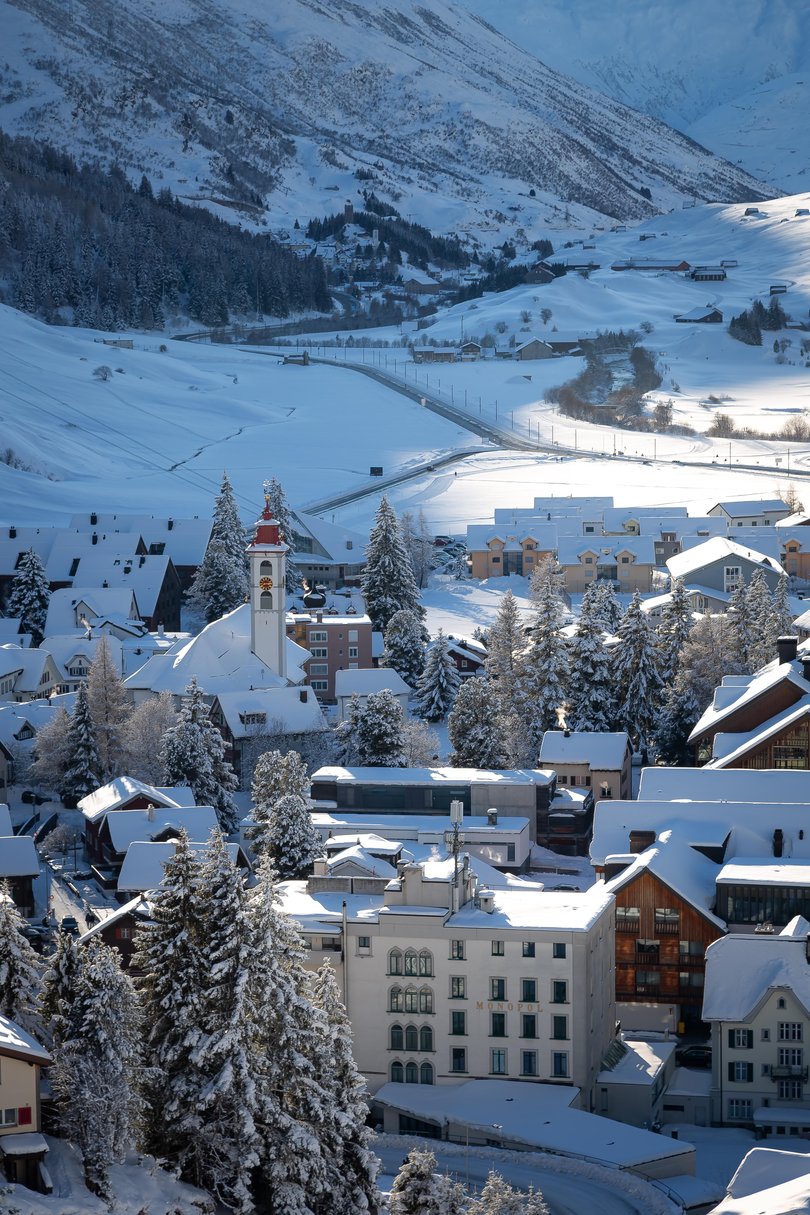
The original Andermatt is a small, sleepy town, almost unchanged for 30 years. However, on its outskirts is an estate of swanky apartment blocks and hotels, including the five-star Chedi and the four-star Radisson Blu.
Last season the resort unveiled a new main street of the Andermatt Reuss village, including the IGNIV restaurant by three Michelin-starred chef, Andreas Caminada, new shops and luxury apartments.
Where to stay:
The visually stunning five-star Chedi is in a league of its own, with Asian/Swiss decor, lavishly proportioned rooms, a spectacular spa with indoor and outdoor pool. The hotel’s Japanese Restaurant has two Michelin stars, and its companion restaurant, The Japanese by The Chedi Andermatt at the top of the mountain also has one star. The Gemsstock gondola is four minutes away by chauffeured ski bus.
